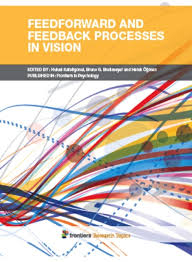Haluk Ogmen, professor of electrical and computer engineering at the UH Cullen College of Engineering, his former doctoral student Hulusi Kafaligonul and his colleague Bruno Breitmeyer, UH professor of psychology, were invited to edit a Perception Science special issue of the journal Frontiers in Psychology earlier this year. Titled “Feedforward and Feedback Processes in Vision,” the online special issue was also presented as an e-book.
“There are a number of different theories, so we are bringing people and the most updated ideas together in this special issue,” Ogmen said. “It’s not comprehensive – many more people work on this question – but it’s a good sample of what’s out there.”
Human brains are adept at operating both positive and negative feedback systems, while most electronic systems are capable of efficiently running only negative feedback systems. Engineers have used negative feedback loops in engineering applications for more than 75 years, but they have experienced limited success in stabilizing systems with positive feedback loops. As they join forces across the country to reverse-engineer the brain, a goal of the U.S. BRAIN Initiative, engineers are studying positive feedback systems, which were mostly ignored in the past, as much as they are exploring negative feedback systems.
“From an engineering and mathematical standpoint, positive feedback systems are highly complex and unstable, but the brain remains stable and operates with massive amounts of positive feedback,” Ogmen said. “This is the major puzzle we still have not solved.”
Basically, a feedforward system is relatively simple – input enters the system and exits as output. A feedback system operates the same way initially, but feeds a copy of the output back into the same system to create a feedback loop.
Feedback systems are either positive or negative based on the addition or subtraction of the signal fed back to the input. Historically, the instability of positive feedback loops has limited their potential in engineering systems, while the stability of negative feedback loops has made them ubiquitous in engineering applications.
Negative feedback systems became common during World War II with automatic guidance systems for missiles and aircraft. At that time, engineers determined that any system working autonomously in an environment with perturbation, noise and other uncertainties benefited from the corrective action of negative feedback loops.
A few years later, cybernetics, the study of regulation and communication of human, animal and computer systems, also had scientists enthusiastically exploring ways to mimic biological systems. The human brain’s abilities to recognize objects, faces and scenes and to navigate the environment are unsurpassed largely due to computational power resulting from feedback processes, Ogmen said.
Ogmen’s interest in feedforward and feedback systems, both positive and negative, began two decades ago with his mathematical model of the human visual system circuitry and his theory that proposed feedback as necessary for flexibility in operations.
He found that positive feedback systems could operate without stability by storing ongoing work in memory and resetting the system as often as necessary before system crashes. Since then, he has continued to refine the positive feedback reset loop with an emphasis on sensory memory.
“The advent of optogenetics and neuroimaging has provided additional remarkable investigative tools for refining our theories,” Ogmen said. “We hope this issue will inspire the readers and act as a catalyst for future work on the issues of feedforward and feedback processes in vision.”
One study in the special section addresses ways the brain’s visual system distinguishes foreground from background in the natural environment, while another study focuses on attention as a feedback mechanism that uses prior knowledge, assumptions and hypotheses to selectively choose information from the environment.
“We know the brain uses feedback processes, both positive and negative, but we don’t know exactly how and when it uses them,” Ogmen said. “So unlocking that core brain function can help us to inform engineering principles and to design systems.”
